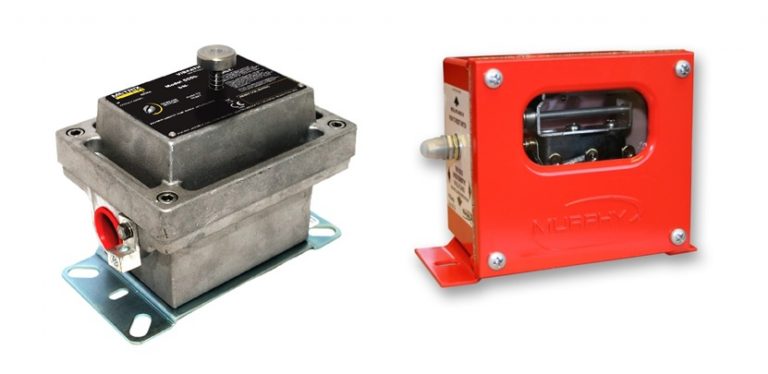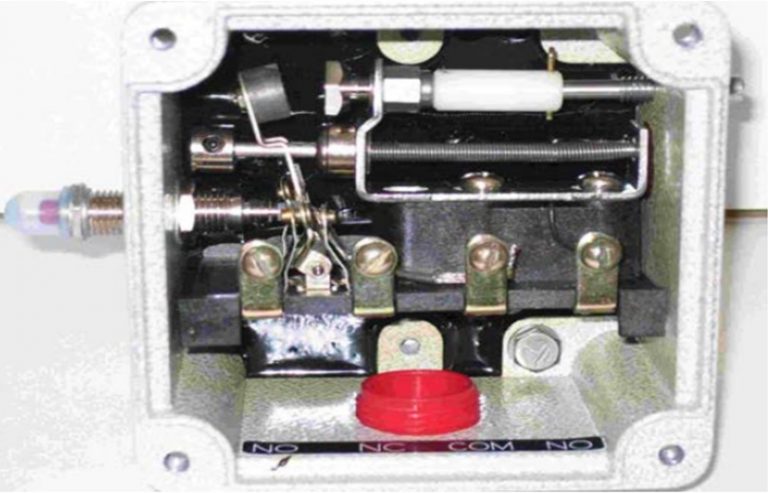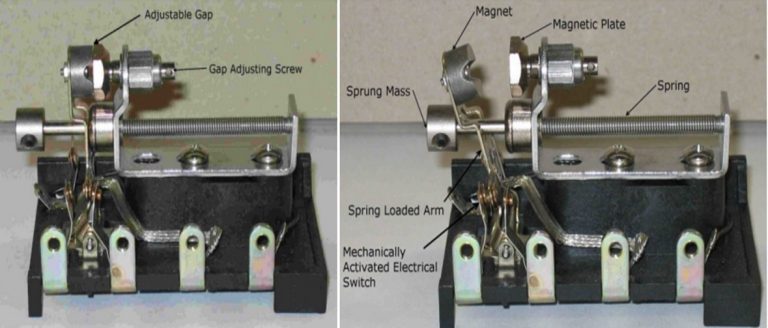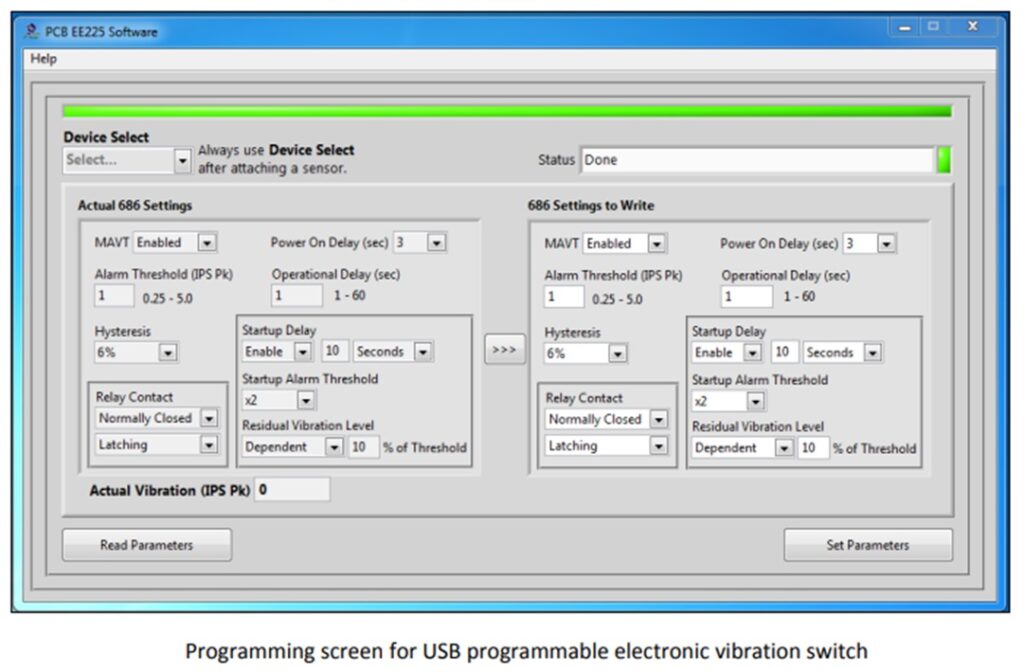Table of Contents
What is vibration switch?
Vibration switches are instruments which are used to protect rotating machinery against catastrophic failure due to excessive vibration. This is particularly true for large fans as found on cooling towers, compressor, Turbines etc. Vibration switches continuously monitor vibration on a machine and provide a digital output or shutdown the machine, depending on the type of vibration switch and its configuration, when vibration levels become too high.

Types of Vibration Switch
There are two basic types of vibration switches
- Mechanical Vibration switch
- Electronic Vibration Switch
1. Mechanical Vibration switch
Mechanical Vibration Switch are most common vibration switch, working principle of mechanical vibration switch is as below.





Working Principle:-A mechanical vibration switch is a fairly simple device consisting of a magnet mounted on a spring loaded lever arm, which in turn is attached to mechanically activated electrical switch contacts. The switch is held in an armed position when the location of a magnetic plate is adjusted so it is close enough to the magnet to overcome the force in the spring loaded arm.
The gap between the magnet and magnetic plate can be adjusted by an external screw adjustment to increase or decrease the magnetic force holding the spring loaded arm in an armed position. Unfortunately, not all mechanical switches have the same maximum gap or force adjustment per turn. Some switches that this author looked at had a maximum gap of only 0.017 to 0.020 inches (4.3 to 5.1 mm) beyond which the magnetic force is not strong enough to overcome the spring force. Other mechanical switches had gaps as high as 0.080 inches (2 mm). To make matters worse, the sensitivity adjustment is also a function of the threads on the adjusting screw and some had fine and some had course threads. The typical procedure for setting the trip sensitivity is by turning the adjusting screw in ¼ turn increments until the switch does not trip on startup. Thus, sensitivity can vary widely between switches.





When motion occurs, the magnet on the spring loaded arm and the sprung mass generate inertial forces that oppose the magnetic force holding the switch closed (armed) and are governed by Newton’s Second Law of Motion F =ma. When the acceleration level is high enough to generate an inertial force that is greater than the magnetic force, the switch trips. The spring loaded arm rests against a sprung mass that can move in three directions as shown in Figure. Thus, mechanical switches are sensitive in all three axes, however, not equally as will be shown later in this paper. The sprung mass was moved for this photo to show functionality.
Note: the sprung mass does not move in the negative X Figure, Armed mechanical switch mechanism with labeled parts Figure Tripped mechanical switch mechanism with labeled parts direction, thus there is a large difference in the shock required to trip the switch in the plus and minus X directions. This can be problematic since mechanical switches often trip due to shock.





The above discussion highlights a key problem with mechanical vibration switches. At low operating speeds, as seen for example in large cooling tower fans, the acceleration is so low that the inertial forces never get high enough to trip the switch in a pure unbalance condition, but, they do trip, so what’s happening to cause them to trip? If the unbalance gets high enough, there are secondary effects, typically impacting, that generates enough acceleration to cause the switch to trip. However, since motion in the –X direction tends to close the switch when it stops abruptly (hits a stop) and doesn’t cause the sprung mass to move, it is much less sensitive in that direction (takes less shock or vibration) than in the +X direction as shown below.
2. Electronic Vibration Switch
With today’s microprocessor technology, electronic vibration switches can be further subdivided into two types, traditional electronic and programmable electronic vibration switches.





Working Principle: Electronic vibration switches are much more accurate and repeatable than mechanical vibration switches. They utilize a calibrated piezoelectric accelerometer, typically embedded in the switch housing, for sensing vibration and can integrate the signal to get velocity and in some cases displacement.
Many electronic vibration switches have some or all of the following options available making them more versatile, effective, and providing better protection than mechanical vibration switches.
- Warning and critical (shutdown) alarms
- Time delays
- Latching and non-latching switch operation
- Raw vibration output
- 4-20 mA output
3. Programmable Electronic Vibration Switches
Programmable electronic vibration switches generally have a little better accuracy and provide better control over trip levels and delays than traditional electronic vibration switches allowing the user to tailor the response as desired. However, they may not have all of the other features of traditional switches. Figure shows a hermetically USB Programmable Smart Vibration Switch mounted on a motor.





Figure shows its programming screen and the large number of options there are for tailoring the alarm levels and delays.





Pressure Switch
Temperature switch
Level switch
Proximity switch
Vibration switch
Control Valve Link
Performance parameters
Valves Classification
Valves Accessories
Valves Problems
Valves Parts